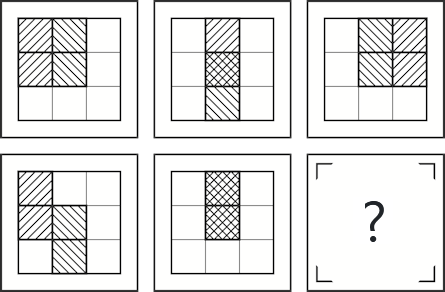In today’s article, we will walk you through everything you need to know to be well prepared for your SAT Writing and Language test. It’s important to read through this article in its entirety because this section of the SAT can be a little tricky. But with the right level of preparation, you’ll crush it for sure.
To get a very high score on your SAT and bag scholarships from top US universities, register here: SAT PREP COURSE.
This section is actually one part of the Evidence-Based Reading and Writing portion of your SAT test. It’s also a replacement for the Critical Reading Test and Writing Test which used to be a part of the old SAT. And, of course, it comes with its own differences and peculiarities.
READ: A Complete Guide to Understanding the SAT (SAT for Dummies)
For one, the section comes with a tighter time constraint. You are supposed to complete 44 questions in 35 minutes only.

IQ test: what is your IQ score?
How smart are you? →Also, quite differently from the Critical Reading and Writing test, this new section places more emphasis on word meaning in extended contexts. It also focuses on how a piece can follow a particular tone or give a particular meaning or impact with word choice.
Format of the New SAT Writing and Language Test
As we mentioned earlier, the SAT Writing and Language Test comes with 44 multiple-choice questions. You must complete it in a space of 35 minutes.
You can also read our foundational article on everything you need to know about the SAT for newbies in the SAT world.
All questions are based on texts which can be culled from any genre at all. And each test will come with four passages which are usually about 400 to 500 words long.
In some cases, some of the texts will come with informational graphics like charts, graphs or tables. But relax, you won’t be doing any math here. It’s strictly a writing and language test.
Of the four passages, one will normally be non-fiction, either one or two of them will be informative/explanatory. One or two of them could be argumentative or persuasive essays.
Let’s talk about the format in which the questions are usually presented.
First, you’ll see the passages on the left-hand column while its accompanying questions stay just beside the right-hand column. To help you locate questions faster and more easily, question numbers are usually embedded in the text. It’s the least they can do with the little time you were given. Lol.
Aside from embedding the question numbers, they may also do other things like underline some words. This will also help in guiding you to the particular part of the passage being tested at that particular point.
Some questions might not even point to a particular part of the passage. Instead, they point to the whole passage in its entirety. Unlike what you have on the reading section, passages for the Writing and Language test are always specifically developed to be used for the test.
READ: The SAT Curve and How It Works
What Does the SAT Writing and Language Test Assess?
Broadly, there are three basic things the new SAT Writing and Language Test assesses. They are your ability to:
- Read and interpret
- Find mistakes and weaknesses
- Fix and improve those mistakes and weaknesses you found.
These abilities are some that you should already possess now because you’ll be needing even more of them in college. Let’s be a little more specific in the areas tested by the SAT Writing and Language Test.
1. Command of Evidence
You are supposed to demonstrate this ability by proving that you are able to improve on the way a passage develops and delivers information. You’ll need skills like how to accurately build a logical argument and how to add supporting information relevant to the passage. Also, how to fine-tune evidence already provided and used in the passage.
2. Words in Context
Questions like this will test your ability to make precise word choices. You will be asked to improve the choice of words in a given portion of the passage. Or pick the best words that fit the greater context.
Also, you’ll have to select word choices that can help make a passage more precise or concise. Plus, you’ll be tested on your ability to make word choices as they relate to syntax, tone, and style.
3. Analysis in History/Social Studies and Science
Questions on this require your acute editorial skills. You’d have to critically analyse a given passage which is usually informational in nature. Then, make editorial decisions to make it read better.
Editorial decisions may include clarifying a certain sequence and improving the precision of reported data. Or relating a given passage to the associated informational graphic in a clearer and more lucid manner.
4. Expression of Ideas
As the header suggests, you will be assessed based on your ability to express your ideas coherently in an easy-to-understand fashion. In questions like these, you will be challenged to examine a particular passage and check out its overall organisation.
You should be able to analyze the impact and flow of the passage based on its organisation. And then after doing this, you will now be tasked with the responsibility of changing words. Or adjusting the structure of the passage in order to improve the strength of the passage.
The editorial changes you make should enable the sentences and paragraphs of the text to work better together to express the central idea of the passage.
5. Standard English Conventions
This is the last skill to be tested in the SAT Writing and Language Test. Questions like these are crafted to assess how much you know about Standard English conventions.
So, what do questions like this require you to do? Pretty straightforward. When attempting questions like this, the examiner expects you to replace words, change clauses, and restructure sentences and punctuation to make sure that the passage is in conformity with basic grammar rules as they hold in the English language.
Also, you will have to do other things like edit for verb tense, check for parallel sentence construction, confirm the subject-verb agreement, and ensure a proper use of the comma.
Having gone through the various areas tested by the SAT Writing and language test, bear in mind that each area is weighted differently.
Of the total of 44 questions, for instance, expect to see about 24 testing your ability to express ideas coherently. 20 questions will test your understanding of Standard English conventions. And about 8 questions will test your command of evidence and use of words in context.
Yes, this is more than 44 because many times, one question would assess more than one content area at a single time.
READ: All You Need to Know About SAT – SAT FAQs
How Does the SAT Writing and Language Test Compare to that of the PSAT?
In comparison, the SAT Writing and Language Test appear to be more sophisticated and complex when compared to the PSAT.
According to the CollegeBoard, the difficulty of this section progresses from the PSAT 8/9 to the PSAT 10 and the PSAT/NMSQT, and then to the SAT. Let’s look at examples of the progression in these three primary areas:
Punctuation
Here’s how it progresses.
The PSAT 8/9 will simply test the use of punctuation in very simple contexts, say the use of a comma for example.
The PSAT 10 will then take things a notch higher by testing more challenging areas like the use of a colon in introducing a list.
And then the SAT, on the other hand, will test a far more challenging context like the use of a semicolon in linking independent clauses.
Sentence Structure
At the level of the PSAT 8/9, the test taker will be tested on his ability to edit simple sentences with only a mild challenge such as sentences that come with an introductory phase.
Going to the PSAT 10 and PSAT/NMSQT, the simple sentences evolve to become more syntactically challenging, carrying introductory phrases and clauses.
When we get to the SAT, we find that sentences are now more syntactically challenging. They are also often lengthy, and come with several clauses.
Graphics
The PSAT 8/9 will simply require the test taker to incorporate information from the graphics into the text accurately.
The PSAT 10 and PSAT/NMSQT will take things up a notch by requiring the test taker to incorporate detailed or somewhat nuanced information from the graphics into the text correctly.
At the level of the SAT, information from the graphics to be incorporated would have already become more specific and complex, requiring a very high level of accuracy.
Wrapping Up
At this point, we will let you digest all that you have learned so far about the SAT Writing and Language Test, so you do not get in over your head.
Like you should have guessed, the ride doesn’t stop here. In our next article, we will continue in the business of furnishing you with information on this section of the SAT, including how you can ace it with ease.
Until then, keep it locked with Effiko. And please, don’t forget to share.

